- HOME
- INVENTORY
- GALLERY
- BOOKS
- CATALOGS
- ABOUT & MORE
- CONTACT
Contact Us
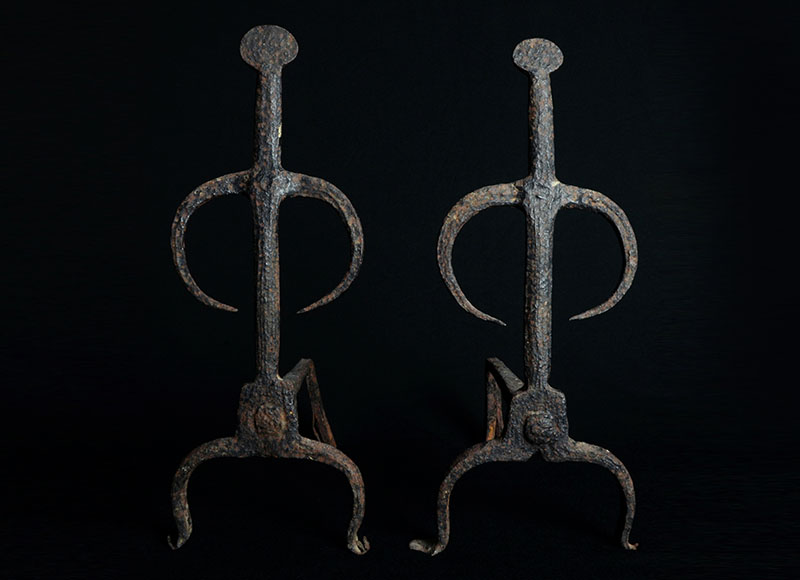
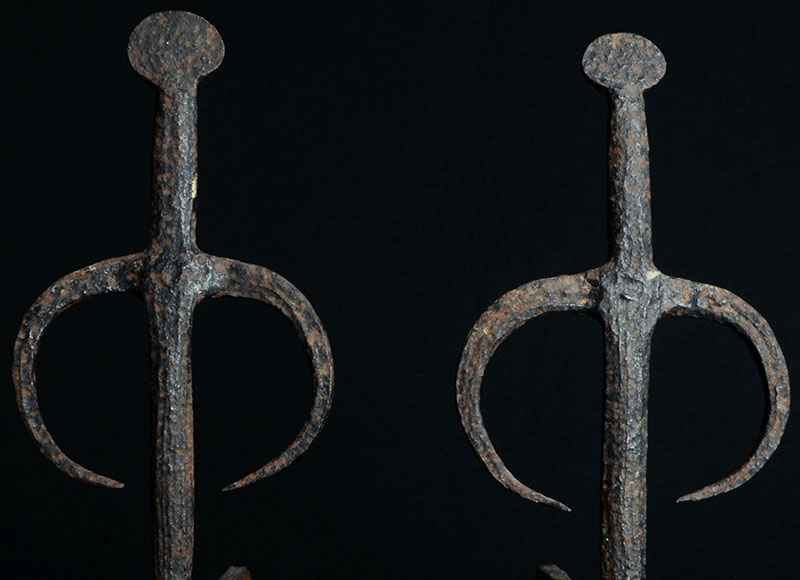
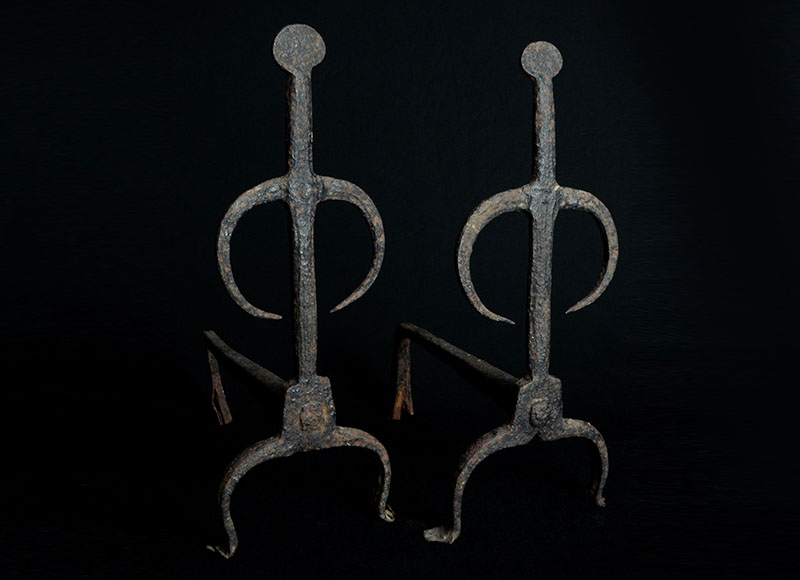
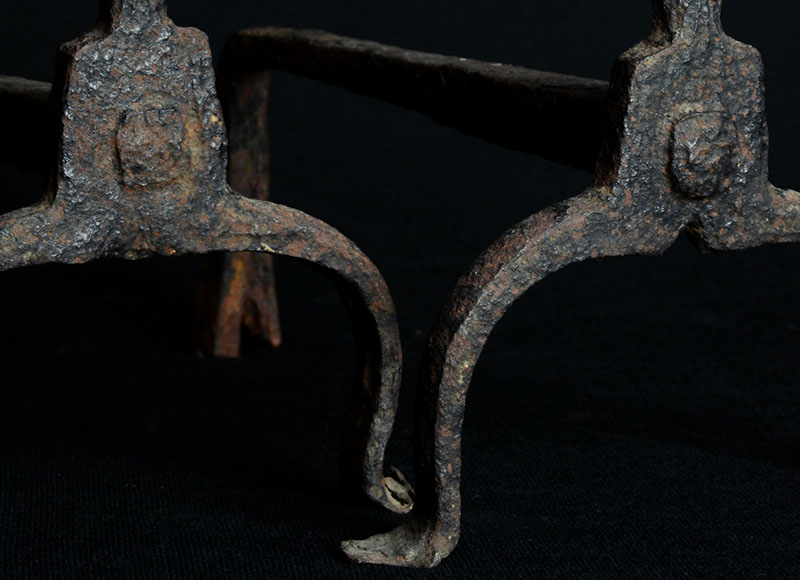
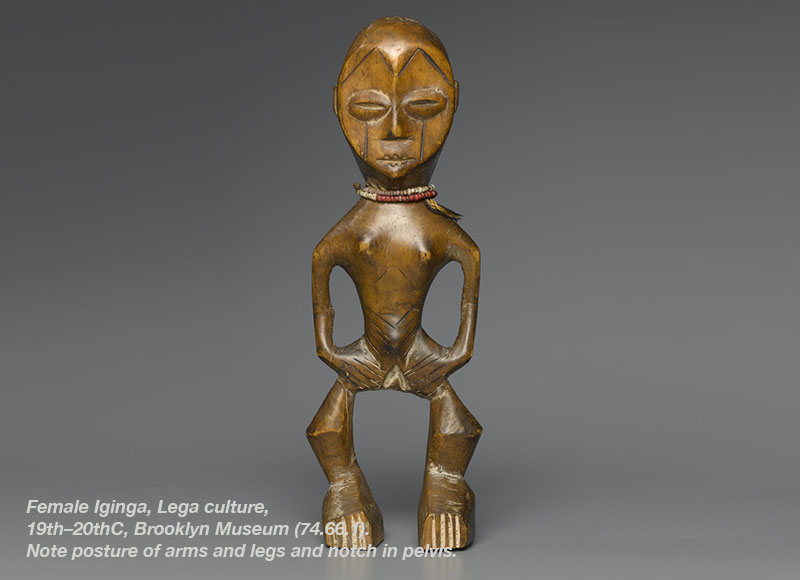
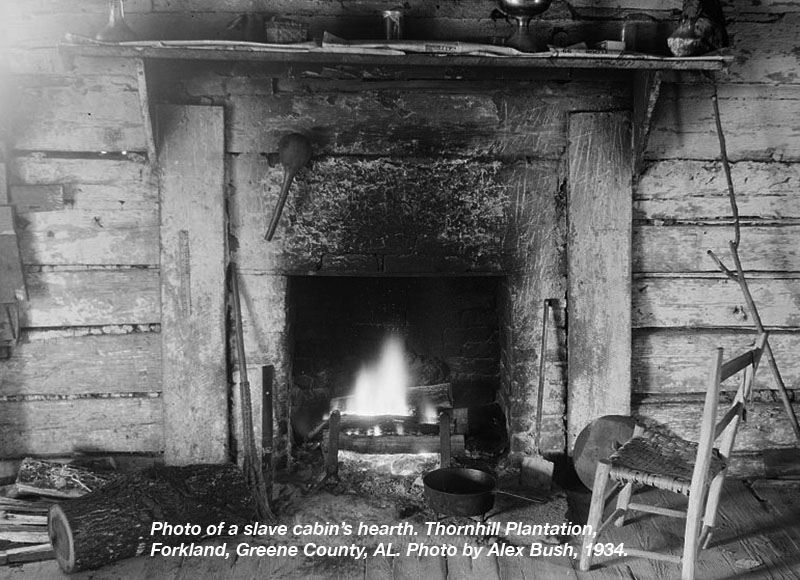
An Important Pair of African-American (Slave Era) Made Andirons
Madison County, Tennessee (found)
Circa: 1820
Size: 14 3/8" (h) x 10 1/2" (deep)
Exceedingly rare wrought iron, diminutive African-American (slave) made andirons in the form of male and female figures. The figures stand in a coded stance communicating power. The female figure is slightly smaller and has a triangular notch clipped between her legs designating her gender.
A number of African men who were forcibly brought to America came with generational expertise in blacksmithing, as iron working was a centuries-old and honorable tradition in Africa.
The anthropologist, John Michael Vlach writes in, By The Work of Their Hands; Studies in Afro-American Folklife, “The [slave] blacksmith was the pivotal craftsman of his community; all other skills in some manner depended on his efforts.” To this end, the slave blacksmith had a greater privilege and standing among other slaves. Slave quarters were barren but had basic necessities like a small hearth, iron kettles, and simple furniture (which they often made themselves). Vlach further writes, “slaves surreptitiously took partial control of their own lives by establishing a sense of place...for those slaves with either a personal experience of Africa or the memory of strong ancestral direction, the slave-made landscape provided the means to recapture a measure of freedom symbolized by the mother continent.” It was the small things in their living quarters that they could make personal, like clothing, tools or music that provided a sense of life in otherwise dark circumstances.
Early African-American, slave-made ironworks are remarkably scarce. A documented wrought iron figure, formerly in the Adele Earnest collection, was excavated in slave quarters in Alexandria, Virginia and is “one of the rare objects which link American Negro Art to Africa” (Made of Iron, 1966, p. 107). It has been put forth that the Earnest figure relates to Mande, Bamana made figures. Mande made iron figures feature small heads and thin wrought bodies, similar to those seen on these andiron figures. And a wood figure, from the Lega culture and in the Brooklyn Museum displays the same posture as these figures and has an incised notch between the legs.
These small andirons, placed within a modest hearth provided a platform for warmth and cooking and in a subtle, but meaningful way served as proud and poignant reminders of personal identity and cultural heritage.
Provenance: Robert Reeves, Private Southern collection, Peter Brams.
HIGH RESOLUTION IMAGES AVAILABLE.
Condition: Excellent with expected wear from age and use with losses to the feet and delaminating at the back leg supports.
Price: SOLD

ALL ITEMS GUARANTEED AS REPRESENTED
STEVEN S. POWERS • 53 STANTON ST, NY, NY 10002 • 917-518-0809 • email: steve@stevenspowers.com • © all rights reserved
